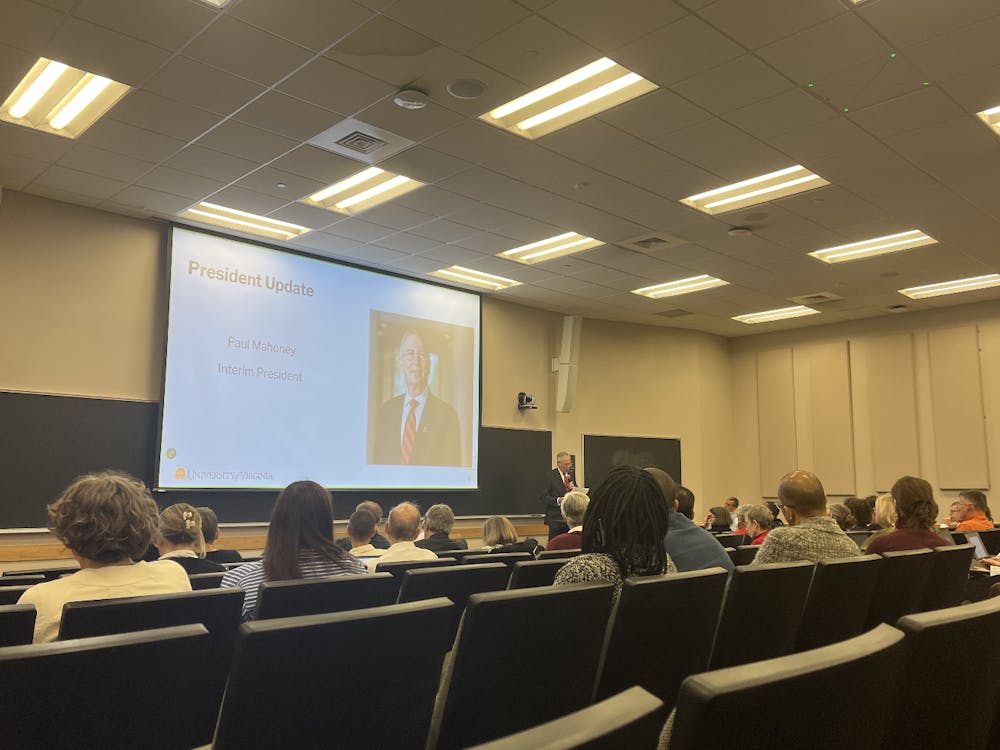The next generation of astro-toys has arrived with the construction of a telescope more powerful and accurate than ever before.
The University astronomy department is embarking on a most ambitious project, to seek out new life and new civilizations with the investment of a large binocular telescope in Arizona.
Upon receiving a $10 million donation to the department last year from Frank Levinson, a 1980 graduate of the doctoral program in astronomy, the department has directed a majority of that money into the construction of the new Large Binocular Telescope on Mount Graham in southwestern Arizona. University astronomy students and faculty will partner up with observatories at the Vatican, Ohio State University and the University of Arizona to build and conduct research with the telescope.
"We have a piece of the pie, but there are many pieces out there. The University of Arizona telescope is just one of the pies," Astronomy Professor Charles Tolbert said.
Tolbert said that investing in a large telescope out west is better than building one at the University because the East Coast's weather conditions and overdeveloped land make it less than ideal for viewing.
"It's a waste of money to put a telescope on the East Coast," Tolbert said.
Still, Robert T. Rood, chair of the astronomy department and director of the University's investment with the LBT, says he often is asked why astronomers are not content with the Hubble Space Telescope. Rood said that although the Hubble produces many beautiful pictures and is able to pick out fine detail, its image analysis capabilities are limited.
This is where the unique design of the LBT comes in.
Unlike most optical telescopes, which possessonly one straight line of lenses or mirrors, the LBT has two large 8.4-meter diameter mirrors placed side by side like a pair of giant binoculars. The mirrors will expand the surface area of the collecting surface for light rays. Having two smaller mirrors instead of one larger mirror will make the telescope less prone to damage.
This type of telescope presents the problem of integrating light patterns from two different mirrors at different angles. But by using a technique called interferometery, astronomers can integrate two or more electromagnetic waves into one signal that can then be analyzed.
Interferometery has been very useful in radio astronomy because of the large wavelength of radio waves. When two radio telescopes receive a radio signal coming from a distant star, they receive the signals at different angles. Then, the two signals are lined up as much as possible in a single line, so they are superimposed on one another.
By superimposing and integrating two or more signals, the collection area of a radio telescope array is much larger: The Very Large Array of Radio Telescopes in Socorro, New Mexico is an example of a facility that uses this technique.
Interferometery is much more problematic when used with optical telescopes, where wavelengths are much shorter and signals must be lined up with much more precision. But the LBT circumvents a majority of signal integration problems because its mirrors are side by side, which allows light to be collected with little necessary adjustment. The LBT also will take advantage of a new technology known as adaptive optics. It will use a two-meter secondary mirror to nullify the atmosphere's distorting effects on light waves.
This adaptive optics technology is so powerful that it can make the LBT images appear as if they were collected above the atmosphere. The two mirrors together will create an image sharpness equivalent to what one 22.8-meter telescope would produce. Rood adds that the telescope's interferometry capabilities will give it a much wider field of view.
"The telescope will be able to see 10 times more than normal optical interferometers," he said.
So just what are the astronomers going to do with this new toy? Rood says, in addition to the new viewing capabilities, the telescope's most appealing application will be its use in extrasolar planet detection. By using a technique know as nullifying interferometery, in which light waves collected by the two mirrors from a single star can be canceled out, astronomers will be able to see any possible planets orbiting distant stars.
Rood's main research interest concerning the telescope will be dense clusters of stars.
"The telescope will enable us to see colliding stars at the center of these clusters, as well as how stars lose their mass, giving clues to the process of stellar evolution," he said.
Also, LBT astronomers will be wielding its mirrors to explore the universe at almost the beginning of time. Specifically, they will be looking for patterns in the microwave background radiation that led to early large-scale structure in the universe. These structures eventually went on to form the galaxies and clusters of galaxies that we see in our universe today. However, as useful as this telescope will be to astronomers, light pollution increasingly is crowding the stars out.
"I think the sky is a beautiful thing," Tolbert comments. "To take it away should be a crime"






